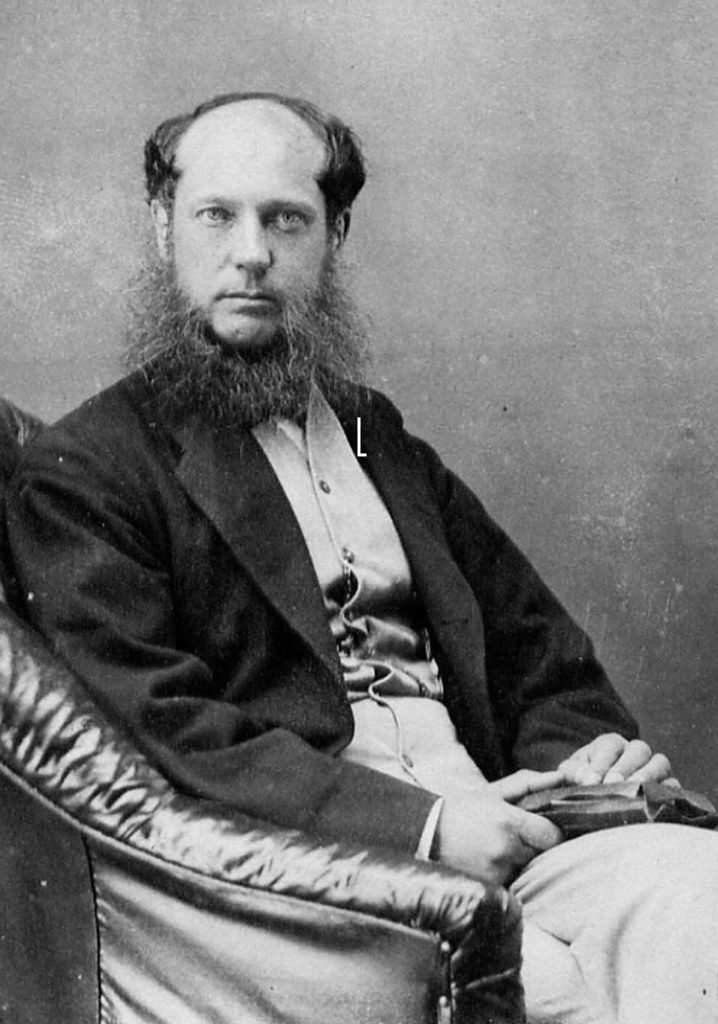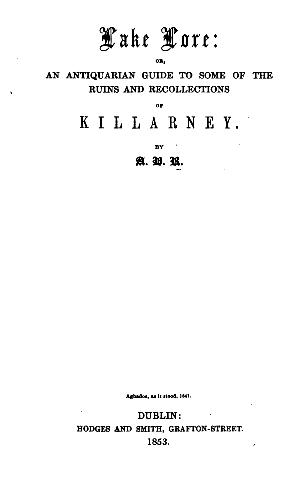Auctions of land, property and livestock in the Castleisland district over an eighteen year period, 1879-1897, were noted down by Michael O’Donohoe during the many hours he spent researching local newspapers in the County Library Tralee.
His neat, concise notes (IE MOD-2-2.1) cover less than one page yet open up volumes in Irish history. A few examples will illustrate. Michael recorded that on 8 April 1884, the 32nd annual sale of shorthorns took place at Ardfert Abbey.
The advertisement revealed that 18 young bulls were offered by Mr Thornton, ‘five belong to the Isabells or Medora tribe, four are of the Duchess (Peacock’s) tribe, four are of the April Daisy tribe and three of the Venus’s tribe and one each of the Portia and Florence tribes’.
A full description of the bulls was given, including the Duke of Halnaby by the Warlaby Bull King David, described as ‘a neat bull, on short legs, with good muscular head and horn, good back and rib’. Another, the Prince of Halnaby, whose dam, Princess of Halnaby had ‘lost her life through an accident … left in this young sire a son worthy of her’:
He is an excellent handler, has great length, is deep in carcase, with well-sprung ribs, grand in twist, with good crops, and well-laid shoulders … he reminds one much of what Lord Rathdonnell’s champion Saxon King was as a yearling.
William Talbot Crosbie (1817-1899) of Ardfert Abbey was a progressive landlord of the nineteenth century. He transformed his estate there:

As one approaches Ardfert, the cabin common in Kerry vanishes to make room for houses well and substantially built of concrete with whale-back roofs, also of concrete … Mr Crosbie was one of the first to perceive the advantage of using it and has made a concrete village and given his farmers houses of a kind previously unknown in his neighbourhood.
Farming skills learned from the Crosbies
Crosbie was similarly progressive in his approach to farming. He crossed an Irish cow with an English shorthorn and was said to have one of the largest and most beautiful herds in Kerry. The late Thomas Hussey of Ardfert recalled that ploughmen ‘learned their skills from the Crosbies’.
Ardfert Abbey, a stately mansion in its day, was destroyed by fire during the Civil War on 22 August 1922. Mr and Mrs Edward Wynne Talbot Crosbie, whose ancestors had been associated with the area since the reign of Elizabeth, subsequently claimed £100,000 compensation for the loss of the historic house. The sum was queried by Veritas, a correspondent of the local press, who found the figure ‘extraordinary’:
The Abbey house in the demesne, the family residence, was burnt out in broad daylight in the presence of many witnesses and so was Abbeyland House, outside the demesne wall; 1,316 trees were cut down and carted away; there were two breaches made in the demesne wall; the grazing rent for two seasons. This is the sum total of the losses sustained by the owner.
Veritas calculated:
This land with the family mansion was sold eight years ago for £8,000 … Abbeyland House was for sale some time ago at £1,500. The 1,316 trees at the current price would make about £1,400. The breaches in the demesne wall can be repaired at a cost of £80 or less. The income from grazing was, as far as I can ascertain £700 per annum.
Veritas reckoned that ‘any intelligent person can form a fair estimate of the loss’ and questioned the arithmetical process used in the compensation claim.


Ballyseedy Estate
The auction of Arthur Blennerhassett’s estate at Ballyseedy in August 1893 is also noted. Unlike Ardfert Abbey, this elegant mansion survives and operates now as a hotel and wedding venue. The Blennerhassetts were associated with the estate for centuries.

Hilda Blennerhassett, the last of the senior line, died on 9 December 1965 and her ghost is said to walk the corridors of the castle carrying a red rose.1

Lee Brook
The auction of Lee Brook, ‘one mile outside Tralee’, and Arabella (‘in the matter of John Teahan, a lunatic’) also occurred in 1893.
Lee Brook, at Curraghleha East, described as ‘well suited for a Gentleman’s Residence’ included in its sale a coach house, stabling, piggery and cow houses. The mansion house (which remains) recalls the history of the Chute family of Chute Hall notably Rowland Eidingtoun Chute (1863-1930) of Lee Brook and Redsteps, Crosshaven, Co Cork, a ‘gentleman farmer’ who married Margaret Urquhart, daughter of Rev Charles Tyner, rector of Milltown.
He numbered among those at a meeting about ‘Catholic Rights and Protestant Recognition’ at Tralee courthouse in July 1903 in respect of an impending visit from the king and queen of England.
Arabella
Arabella House, located at Ballymacelligott, is a late Georgian residence which also survives, and was the birthplace of historian, Archdeacon Arthur Blennerhasset Rowan. His many publications included Lake Lore (1853) which he dedicated to Henry Arthur Herbert, MP, of Muckross.
Arabella house also recalls the history of Major Charles George Fairfield of Mount Eagle, Castleisland, who married the archdeacon’s sister, Arabella Margaret, only daughter of William Rowan Esq of Arabella.2
The auction list goes on, each item throwing up its own rich history. Sandville was up for sale in April 1892, described as a ‘splendid residence … with a first rate Dairy or Fattening Farm’. Bounded by the River Maine, it offered ‘great accommodation in connection with a Lime Stone Farm’.3
It is left to the researcher to progress. Michael developed a useful guide to the Houses of Castleisland from which Sandville Cottage and Sandville House can be distinguished (IE MOD-55-55.1-55.1.148).
It is a good starting point.
______________
1 Information sheet, 'The History of Ballyseede Castle' courtesy Rory O'Sullivan, proprietor of Ballyseede Castle. Hilda Blennerhassett, MBE, daughter of Major Arthur Blennerhassett, DL, left estate valued at £101,864. Bequests included Ballyseedy church, Dudley Nurses Fund and the Royal National Lifeboat Society. Ballyseedy Castle was sold in 1967 to Arthur and Eileen Sheraton (who changed the name to Ballyseede), sold again in 1973 to Paddy and Mary Bresnan (Clare Manor Hotel Ltd). In 1985 Bart O'Connor (from Boston) was in ownership. He put it on the market in 2001. 2 The Rowan name was continued in the Fairfield family in Arthur Rowan Fairfield (1839-1915) whose grandson, the late David Mackenzie Ogilvy, was known in the business world as 'the father of advertising'. Further reference on Major Fairfield, his family and legacy in Kerry in Philip of the Hundred Cows, a folk tale from Cordal (2015). 3 See the history of Sandville Cottage in The Kerryman, 6 April 2006, 'Wrens an intriguing family history'.





